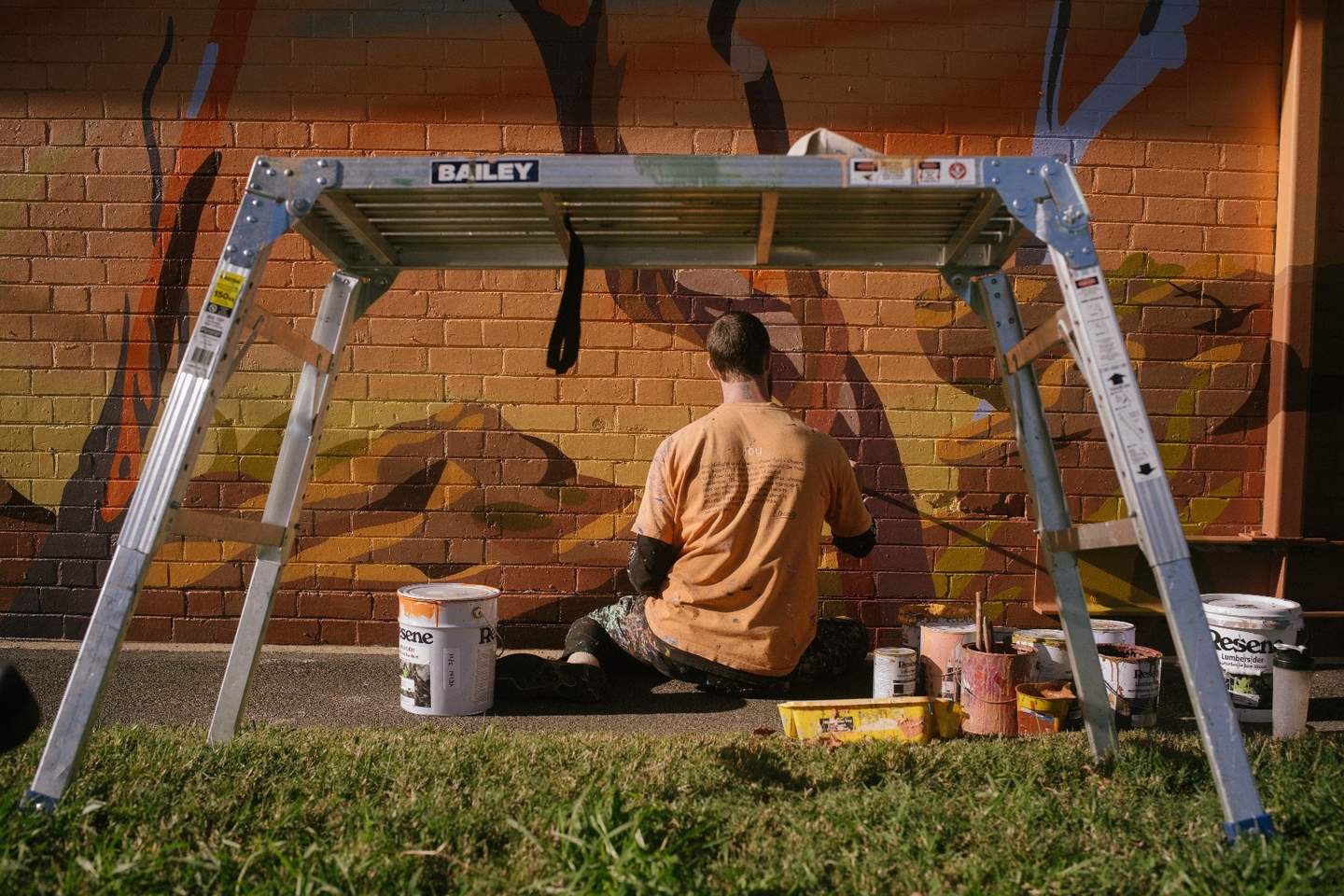More than one in five homes were damp some or all of the time, and for renters, dampness was more than twice as common than for those who owned their home or held it in a family trust, Stats NZ said today.
The 2018 Census results showed that 318,891 homes were affected by damp – more than the total number of occupied private dwellings in the Canterbury and Otago regions combined.
Of those homes affected by damp, 44,520 were damp all the time (3.0 percent of all homes). A further 274,371 were sometimes damp (18.5 percent of all homes).
“For the first time, the census provides information on dampness and mould in homes throughout New Zealand,” census general manager Kathy Connolly said.
Housing quality information collected in the 2018 Census also included access to basic amenities, such as cooking facilities and a refrigerator. This contributes to a national picture of the state of our housing.
Compared with homes that were owned or held in a family trust by the household, the homes of renters (households paying rent for their home) were about seven times more likely to be always damp. Of households that rented their home, 7.5 percent reported that it was always damp, and 30.6 percent said it was sometimes damp. For households that owned their home or held it in a family trust, 1.1 percent said it was always damp, and 13.7 percent said it was sometimes damp.
| Dwelling dampness indicator | Owned or in a family trust | Rented |
| Always damp | 1.1 | 7.5 |
| Sometimes damp | 13.7 | 30.6 |
| Not damp | 85.2 | 62 |
Dampness is when a home feels or smells damp or has damp patches on the wall, ceiling, floor, or window frames.
Visible mould larger than an A4 sheet of paper was always present in 4.3 percent (64,536) of homes and sometimes present in 12.6 percent (188,319) of homes. As with dampness, mould was more common in the homes of those who were renting. For renters, almost 1 in 10 (9.6 percent) were living in a home where visible mould over A4 size was always present, and 1 in 5 (20.2 percent) were living in a home where this amount of mould was sometimes present. For households who owned their home or held it in a family trust, 2.1 percent reported visible mould over A4 size was always present, and 9.5 percent reported it was sometimes present.
The 2018 Census showed that just under 6,000 homes had none of the basic amenities asked about in the census. The basic amenities were cooking facilities, tap water that is safe to drink, kitchen sink, refrigerator, bath or shower, toilet, and electricity supply. These amenities needed to be in working order to be counted. Renters were less likely to have access to a refrigerator, with 8.2 percent of these households reporting no access to this compared with 0.9 percent of those who owned their home or held it in a family trust.
Our Wellbeing statistics: 2018 showed some similar results to the census for housing quality. For example, 3.6 percent of respondents reported that their home was always damp compared with 3.0 percent in the 2018 Census. However, a higher percentage of respondents reported their home was sometimes damp (30.5 percent) than in the 2018 Census. Variations between the census and the wellbeing results are related to differences in collection. The information for the wellbeing statistics comes from the New Zealand General Social Survey, which is interviewer-administered and takes place over the course of a year. The census is self-completed and a snapshot in time.
The housing quality data from the census showed regional variations. Dampness and mould were most common in Northland, Gisborne, and Auckland. In Northland, 4.5 percent of occupied private dwellings were always damp, and 23.1 percent were sometimes damp. In Auckland, 24,765 homes always had mould over A4 size.
| Always damp | Sometimes damp | Not damp | Total occupied private dwellings stated | Not elsewhere included | Total occupied private dwellings | ||||
|---|---|---|---|---|---|---|---|---|---|
| Regional council | Number | Percent | Number | Percent | Number | Percent | Number | Number | Number |
| Northland | 2,565 | 4.5 | 13,056 | 23.1 | 40,965 | 72.4 | 56,589 | 8,322 | 64,911 |
| Auckland | 17,322 | 4.0 | 90,552 | 20.9 | 326,286 | 75.2 | 434,157 | 64,632 | 498,789 |
| Waikato | 4,557 | 3.1 | 28,629 | 19.6 | 112,812 | 77.3 | 145,998 | 18,201 | 164,196 |
| Bay of Plenty | 2,898 | 3.0 | 17,172 | 17.5 | 77,964 | 79.5 | 98,037 | 13,647 | 111,684 |
| Gisborne | 579 | 4.1 | 3,153 | 22.3 | 10,413 | 73.6 | 14,145 | 2,364 | 16,509 |
| Hawke’s Bay | 1,341 | 2.5 | 8,502 | 15.8 | 43,860 | 81.7 | 53,703 | 6,828 | 60,531 |
| Taranaki | 1,119 | 2.7 | 7,743 | 18.8 | 32,349 | 78.5 | 41,208 | 4,233 | 45,444 |
| Manawatū-Whanganui | 2,232 | 2.8 | 15,333 | 19.0 | 63,315 | 78.3 | 80,883 | 9,930 | 90,810 |
| Wellington | 4,872 | 2.9 | 31,962 | 18.9 | 132,426 | 78.2 | 169,263 | 16,962 | 186,225 |
| Tasman | 234 | 1.3 | 2,295 | 12.6 | 15,735 | 86.2 | 18,261 | 1,509 | 19,770 |
| Nelson | 285 | 1.6 | 2,814 | 15.4 | 15,171 | 83.0 | 18,273 | 1,710 | 19,980 |
| Marlborough | 207 | 1.2 | 1,929 | 11.2 | 15,105 | 87.6 | 17,238 | 1,674 | 18,912 |
| West Coast | 363 | 3.0 | 2,421 | 20.1 | 9,240 | 76.9 | 12,021 | 1,674 | 13,695 |
| Canterbury | 3,717 | 1.8 | 30,036 | 14.5 | 172,773 | 83.7 | 206,526 | 20,283 | 226,806 |
| Otago | 1,503 | 1.9 | 12,879 | 16.3 | 64,836 | 81.8 | 79,215 | 7,620 | 86,838 |
| Southland | 705 | 2.0 | 5,802 | 16.3 | 29,118 | 81.7 | 35,625 | 3,303 | 38,931 |
| Area outside region | 27 | 11.5 | 93 | 39.7 | 114 | 48.7 | 234 | 51 | 285 |
| Total | 44,520 | 274,371 | 1,162,485 | 1,481,376 | 182,937 | 1,664,313 | |||
| Note: The 2018 Census counted fewer dwellings in the Marlborough region than existed at census time. This was mainly in the Marlborough Sounds. If you intend to use dwelling counts at this geography, please contact [email protected] for more information. | |||||||||
| Mould over A4 size – always | Mould over A4 size – sometimes | No mould/mould smaller than A4 size | Total occupied private dwellings stated | Not elsewhere included | Total occupied private dwellings | ||||
|---|---|---|---|---|---|---|---|---|---|
| Regional council | Number | Percent | Number | Percent | Number | Percent | Number | Number | Number |
| Northland | 3,540 | 6.2 | 9,183 | 16.2 | 44,091 | 77.6 | 56,814 | 8,097 | 64,911 |
| Auckland | 24,765 | 5.6 | 68,502 | 15.6 | 345,828 | 78.8 | 439,095 | 59,694 | 498,789 |
| Waikato | 6,807 | 4.6 | 19,881 | 13.5 | 120,447 | 81.9 | 147,138 | 17,058 | 164,196 |
| Bay of Plenty | 4,236 | 4.3 | 12,198 | 12.4 | 82,173 | 83.3 | 98,607 | 13,074 | 111,684 |
| Gisborne | 819 | 5.8 | 2,205 | 15.5 | 11,205 | 78.7 | 14,229 | 2,283 | 16,509 |
| Hawke’s Bay | 1,926 | 3.6 | 5,667 | 10.5 | 46,389 | 85.9 | 53,985 | 6,543 | 60,531 |
| Taranaki | 1,890 | 4.6 | 5,724 | 13.8 | 33,813 | 81.6 | 41,424 | 4,020 | 45,444 |
| Manawatū-Whanganui | 3,336 | 4.1 | 10,278 | 12.6 | 67,911 | 83.3 | 81,525 | 9,285 | 90,810 |
| Wellington | 7,332 | 4.3 | 21,171 | 12.4 | 142,044 | 83.3 | 170,550 | 15,675 | 186,225 |
| Tasman | 390 | 2.1 | 1,470 | 8.0 | 16,488 | 89.9 | 18,348 | 1,419 | 19,770 |
| Nelson | 453 | 2.5 | 1,755 | 9.5 | 16,182 | 88.0 | 18,390 | 1,590 | 19,980 |
| Marlborough | 306 | 1.8 | 1,149 | 6.6 | 15,843 | 91.6 | 17,298 | 1,614 | 18,912 |
| West Coast | 471 | 3.9 | 1,359 | 11.3 | 10,152 | 84.7 | 11,982 | 1,716 | 13,695 |
| Canterbury | 4,977 | 2.4 | 16,959 | 8.1 | 186,255 | 89.5 | 208,188 | 18,621 | 226,806 |
| Otago | 2,193 | 2.7 | 7,224 | 9.1 | 70,335 | 88.2 | 79,752 | 7,083 | 86,838 |
| Southland | 1,071 | 3.0 | 3,534 | 9.9 | 31,188 | 87.1 | 35,793 | 3,138 | 38,931 |
| Area outside region | 30 | 12.7 | 60 | 25.3 | 150 | 63.3 | 237 | 45 | 285 |
| Total | 64,536 | 188,319 | 1,240,494 | 1,493,349 | 170,964 | 1,664,313 | |||
Note: The 2018 Census counted fewer dwellings in the Marlborough region than existed at census time. This was mainly in the Marlborough Sounds. If you intend to use dwelling counts at this geography, please contact [email protected] for more information. | |||||||||
About housing quality data
Housing quality data collected in the census relates to occupied private dwellings. It does not include non-private dwellings, such as boarding houses and residential care for older people.
Renting is defined as those households who did not own their home or have it in a family trust and were paying rent.This is households in the category ‘dwelling not owned and not held in a family trust, rent payments made’ of the tenure of household variable. It includes households who were occupying a dwelling under a rent-to-buy agreement.
The response rate for housing quality variables was 92 percent; no use was made of administrative data sources or imputation. This means data for these variables is not available for occupied private dwellings if the information was not provided on the dwelling form. The non-response percentages for the housing quality variables were:
- dwelling dampness indicator – 8.0 percent
- dwelling mould indicator – 8.1 percent
- access to basic amenities – 8.0 percent.
Analysis of the relationship between non-response to the 2018 Census and deprivation indicates it is likely the census data under represents the level of housing quality issues in New Zealand to some extent.
The overall quality rating for the housing quality variables is moderate quality . Our tool DataInfo+ has more information and definitions on Housing quality: dwelling dampness, mould, and access to basic amenities. The quality rating of a variable provides an overall evaluation of data quality for that single variable. Data quality may vary at smaller statistical geographies, subpopulations, or when cross-tabulated with other variables.
About the 2018 Census dataset
We combined data from the census forms with administrative data to create the 2018 Census dataset, which meets Stats NZ’s quality criteria for population structure information.
We added real data about real people to the dataset where we were confident the people should be counted but hadn’t completed a census form. We also used data from the 2013 Census and administrative sources and statistical imputation methods to fill in some missing characteristics of people and dwellings.
An independent panel of experts has assessed the quality of the 2018 Census dataset. In its Initial report of the 2018 External Data Quality Panel, the panel endorsed the overall methods Stats NZ used for the 2018 Census and assessed the quality of some of the key variables. Its assessment of many other variables will be available in its final report due in December.








